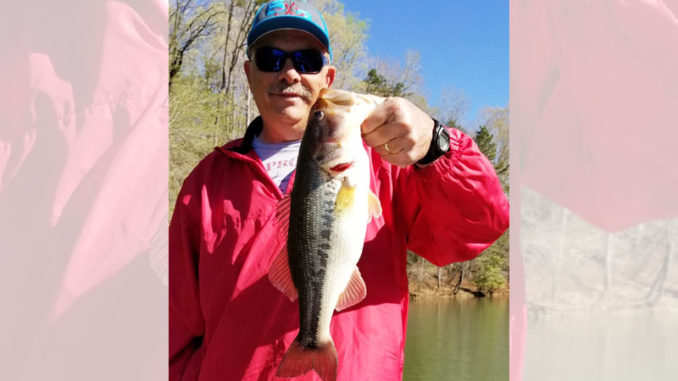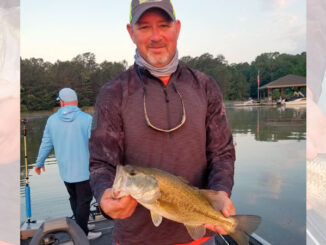
Many anglers overlook Hickory’s largemouth and spotted bass
Over the years, the big striped bass roaming Lake Hickory’s 4,223 acres have received most anglers’ attention. But guide Andy Fox of Fishers of Men Guide Service said fishermen shouldn’t overlook two of the lake’s other major attractions: largemouth and spotted bass.
Fox said Hickory, a narrow, riverine lake in North Carolina’s Foothills, harbors quality largemouth bass up to 5 pounds, with a generous number of 3-pound fish. Trophy bass are present for the taking as well.
Bass tournaments on Hickory are frequently won with 18-pound stringers of mixed largemouth and spotted bass, the latter on the increase in terms of their percentage of the bass population.
“While largemouth bass are more plentiful, lots of spotted bass are showing up at Hickory,” said Fox (828-312-8771). “The spots grow big, with several 6-pounders reportedly caught. While spots are the more aggressive fish, largemouth remain in the majority, though that’s subject to change like it has at other reservoirs where spots have appeared and eventually taken over.”
Try topwater early
In June, Fox said he begins his mornings looking for a topwater bite from both largemouth and spots.
“They’ll strike surface lures like Pop-Rs, Spooks and Whopper Ploppers,” said Fox. “Look for breaking baitfish along shallow points, cuts and rocky areas.”
One creek usually filled with forage is Gunpowder Creek.
Once the sun comes up, Fox fishes brush-laden docks near steep, rocky banks. He flips the docks with standard jigs and shaky-head jigs and soft-plastics. Green pumpkin and watermelon are effective colors.
By mid-June, when the heat turns on at Hickory, Fox targets rocky points, channel drops, steep banks and ledges in 4 to 15 feet of water. He probes the structure with deep-running crankbaits in natural shad or sexy shad colors.
“I also fish shaky head jigs by dragging or hopping them along rock structure,” Fox said. “There’s no particular area of the lake that’s better than others at this time. It’s a matter of finding forage in conjunction with deep structure. June bass also school on structure, so it’s possible to catch several fish from one place.”
By late June, Fox mostly fishes at night, which is common practice at mountain reservoirs because of the daytime heat.



